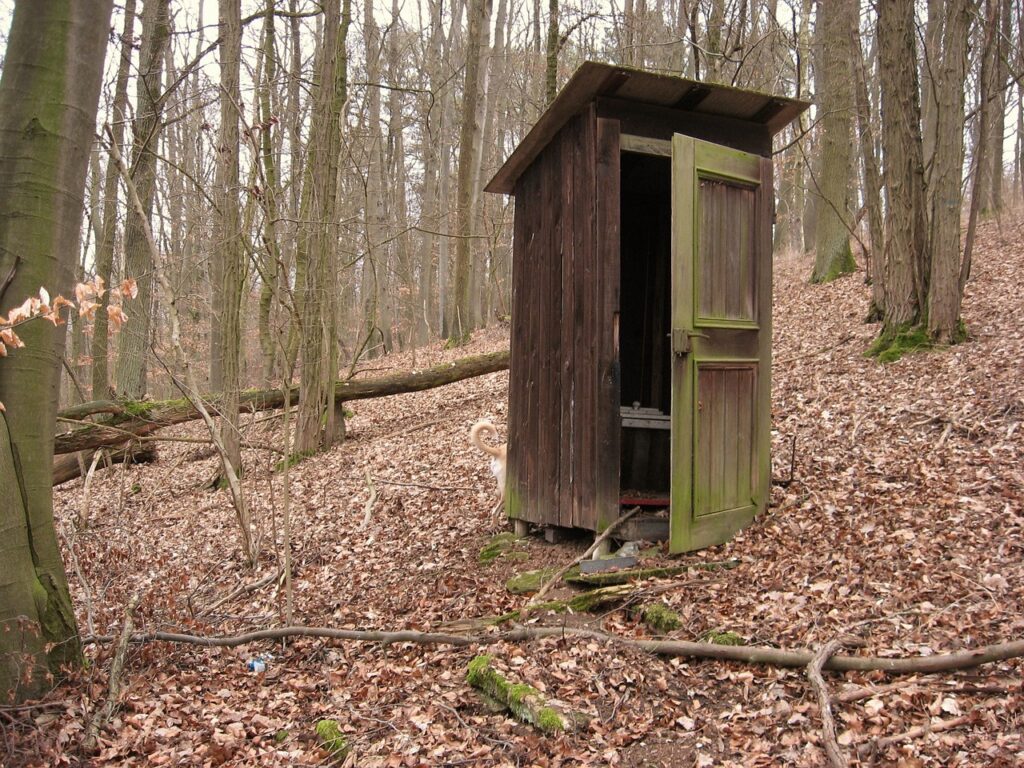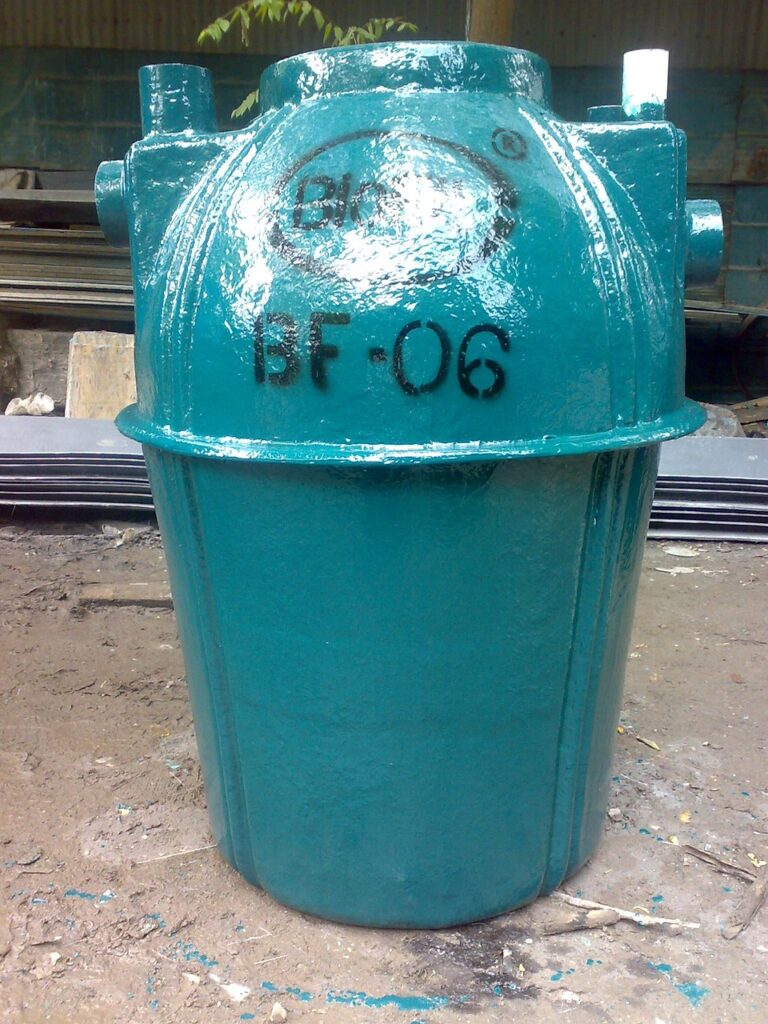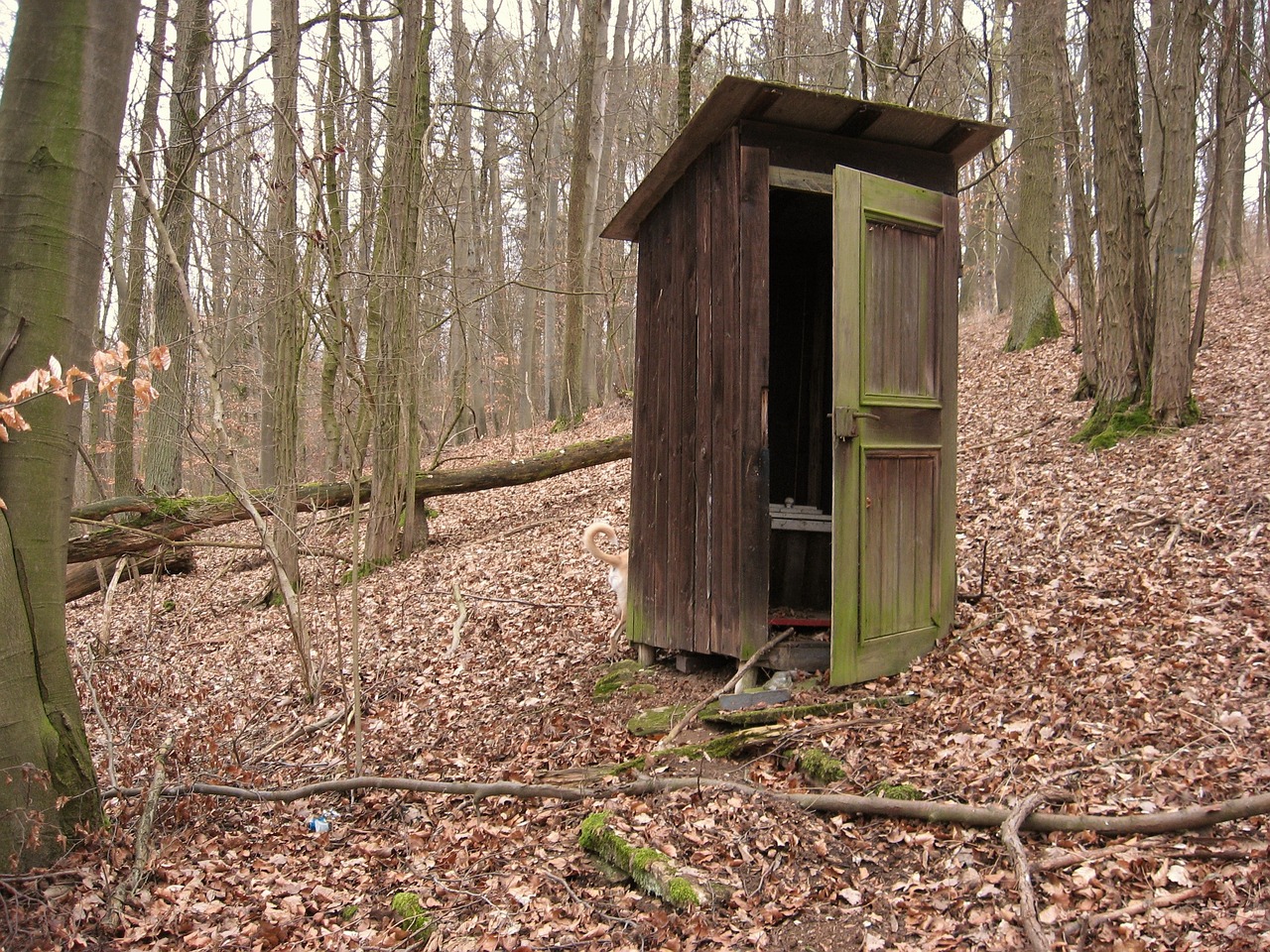Imagine never having to worry about your septic system again. With the 1250 Gallon Septic Tank, you can ensure efficient and hassle-free waste management for years to come. Designed to accommodate large residential households or small commercial establishments, this septic tank provides ample capacity and durability. Say goodbye to frequent pumping and maintenance, as this high-quality, sturdy tank can handle heavy usage without any issues. Keep your surroundings clean, avoid costly repairs, and enjoy peace of mind with the reliable 1250 Gallon Septic Tank.

Understanding 1250 Gallon Septic Tank
Definition of a septic tank
A septic tank is an underground wastewater treatment system that is commonly used in areas where there is no access to centralized sewer systems. It is designed to collect, treat, and dispose of domestic wastewater from households and commercial establishments. The septic tank works by separating solids from the liquid, allowing the liquid portion to flow out of the tank and into the drain field, where it can be naturally filtered and absorbed into the ground.
Specifics of a 1250 gallon septic tank
A 1250 gallon septic tank is a specific size of septic tank that is commonly used for residential properties with a medium to large number of occupants. It is designed to hold up to 1250 gallons or approximately 4732 liters of wastewater. This size of septic tank is suitable for households with four to six members on average, although it can also be used for smaller households where water usage is higher, or larger households with moderate water usage.
Materials used in 1250 gallon septic tank construction
1250 gallon septic tanks are typically made of durable materials that can withstand the harsh underground environment and provide long-lasting performance. Common materials used in the construction of these septic tanks include reinforced concrete, high-density polyethylene (HDPE), and fiberglass. These materials are chosen for their strength, resistance to corrosion and chemicals, and ability to maintain structural integrity over time.
Installation of 1250 Gallon Septic Tank
Pre-installation procedures
Before installing a 1250 gallon septic tank, there are several important pre-installation procedures that need to be followed. These include obtaining any necessary building permits or approvals from local authorities, identifying the ideal location for the septic tank based on soil conditions and setback requirements, and ensuring that the chosen location is easily accessible for future maintenance and inspection.
Installation process
The installation process for a 1250 gallon septic tank involves several key steps. Firstly, the area designated for the septic tank is excavated to the required depth and dimensions. The septic tank is then carefully lowered into the excavation and properly aligned to ensure proper functioning. Connections are made to the inlet and outlet pipes, as well as any necessary venting and access points. Finally, the tank is backfilled with soil and compacted to ensure stability.
Post-installation procedures
Once the 1250 gallon septic tank is installed, there are important post-installation procedures that need to be followed to ensure its proper operation. This includes conducting a hydraulic load test to verify the tank’s capacity, checking for any leaks or defects, and backfilling the excavation site to complete the installation. Additionally, it is crucial to educate the homeowners about proper usage and maintenance of the septic tank to prevent future issues.
Maintenance of 1250 Gallon Septic Tank
Regular septic tank cleaning
Regular septic tank cleaning is essential to maintain the functionality and longevity of a 1250 gallon septic tank. On average, septic tanks should be pumped every three to five years, although the frequency may vary depending on household size, water usage, and the amount of solids being produced. Hiring a professional septic tank service provider is recommended to ensure thorough cleaning and proper disposal of the waste materials.
Inspection tips for 1250 gallon septic tank
In addition to regular cleaning, periodic inspection of the 1250 gallon septic tank is crucial to identify any potential issues before they escalate. Some key inspection tips include checking for any signs of leakage or odors around the tank, monitoring the level of solids inside the tank, and ensuring proper drainage into the drain field. It is also important to inspect the tank’s components, such as the inlet and outlet baffles, for any damage or blockages.
Common septic tank issues and their solutions
Despite regular maintenance, septic tanks may encounter certain issues over time. Some common issues include blockages or clogs in the pipes, tank overflow, and drain field failure. These issues can be addressed through various solutions, such as removing clogs through hydro jetting or mechanical snaking, repairing or replacing damaged components, and implementing remediation techniques to restore the functionality of the drain field. Consulting a professional septic tank service provider is advised for proper diagnosis and resolution of these issues.

Cost of a 1250 Gallon Septic Tank
Pricing factors
The cost of a 1250 gallon septic tank can vary depending on several factors. Some key pricing factors include the materials used in construction, the complexity of the installation process, local labor rates, and any additional features or accessories required. It is important to obtain multiple quotes from reputable septic tank suppliers and contractors to ensure a fair and competitive price.
Average cost for a 1250 gallon septic tank
On average, the cost of a 1250 gallon septic tank ranges from $1,500 to $3,000, excluding installation. This cost typically includes the septic tank itself and any necessary fittings or components. However, it is important to note that this is just an average estimate and actual costs may vary depending on the specific factors mentioned earlier.
Extra costs (installation, maintenance)
In addition to the cost of the septic tank itself, there are additional costs associated with the installation and ongoing maintenance of a 1250 gallon septic tank. The installation costs can vary depending on factors such as excavation requirements, accessibility of the installation site, and any necessary permits or inspections. Ongoing maintenance costs include regular cleaning and inspection, which typically range from $200 to $500 per service, depending on the location and service provider.
Lifespan of a 1250 Gallon Septic Tank
Factors affecting the lifespan of a septic tank
The lifespan of a 1250 gallon septic tank can be influenced by several factors. Some key factors include the quality of materials used in construction, the frequency and effectiveness of maintenance, the amount and type of wastewater generated, the soil conditions in the drain field, and any external factors that may impact the tank’s structural integrity, such as tree roots or heavy machinery near the tank.
Average lifespan of a 1250 gallon septic tank
With proper maintenance and care, a well-constructed 1250 gallon septic tank can last for 30 to 40 years or even longer. However, it is important to note that the lifespan can be significantly shorter if the tank is not properly maintained or if there are other factors that contribute to premature deterioration. Regular inspections and timely repairs are key to maximizing the lifespan of the septic tank.
Signs of an aging septic tank
As a 1250 gallon septic tank ages, there may be certain signs that indicate its need for repair or replacement. Some common signs of an aging septic tank include frequent backups or slow drains, foul odors in the vicinity of the tank or drain field, lush vegetation or standing water in the drain field area, and visible cracks or damage to the tank’s structure. If any of these signs are observed, it is important to consult a professional septic tank service provider for appropriate action.
Selecting the Right Septic Tank Size
Understanding the importance of proper septic tank sizing
Selecting the right size of septic tank is essential to ensure effective wastewater treatment and prevent issues such as tank overflow or failure. Proper sizing takes into account factors such as the number of occupants in the household, water usage patterns, and the amount of solid waste generated. Undersized tanks may not be able to handle the wastewater volume, while oversized tanks can lead to inadequate treatment and increased maintenance requirements.
When is a 1250 gallon septic tank ideal
A 1250 gallon septic tank is considered ideal for households with four to six members on average, or for households that have moderate water usage. This size of septic tank provides an appropriate balance between capacity and cost-effectiveness. However, it is important to consider other factors such as the type of soil, local regulations, and future expansion plans when determining the ideal size for a septic tank.
Assessing your household size and waste management needs
To determine if a 1250 gallon septic tank is suitable for your household, it is important to assess your household size and waste management needs. Consider the number of occupants, their water usage habits, and the expected volume of wastewater generated. Consulting a professional septic tank designer or installer can provide valuable insights and help determine the appropriate size for your specific requirements.
Legal Framework for 1250 Gallon Septic Tanks
Local regulations for septic tank size
The installation of septic tanks, including 1250 gallon tanks, is regulated by local authorities to ensure proper wastewater management and prevent environmental contamination. Local regulations typically specify requirements for septic tank size based on factors such as household size, water usage, and soil conditions. It is important to familiarize yourself with these regulations before installing a septic tank to avoid legal complications.
Permit requirements for 1250 gallon septic tanks
In addition to adhering to local regulations, the installation of a 1250 gallon septic tank may require obtaining permits or approvals from relevant authorities. These permits generally involve submitting detailed plans and specifications of the proposed septic system, including the tank size, location, and design. Failure to obtain the necessary permits can result in fines or other legal consequences, making it essential to comply with permit requirements.
Consequences of violating septic tank regulations
Violating septic tank regulations, whether in terms of size, installation, or maintenance, can have serious consequences. These consequences can include fines, legal action, mandated repairs or replacements, and restrictions on property use. Additionally, non-compliance with regulations can lead to environmental contamination and public health hazards. It is important to prioritize compliance with regulations to ensure the proper functioning and longevity of the septic tank system.
Environmental Impact of 1250 Gallon Septic Tanks
How septic tanks affect the environment
While septic tanks are generally considered a safe and effective wastewater treatment option, they can have environmental impacts if not properly maintained or if there are system failures. Improperly treated or discharged wastewater can contaminate nearby water sources, such as groundwater or surface water, leading to pollution and potential health risks. Additionally, the use of certain cleaning chemicals or excessive water usage can contribute to nutrient pollution and disrupt ecosystems.
Efficient methods to reduce environmental impact
To minimize the environmental impact of a 1250 gallon septic tank, there are several efficient methods that can be implemented. Regular maintenance and cleaning to prevent system failures and leaks is essential. Proper waste management, including the avoidance of harmful chemicals and excessive water usage, can also reduce environmental impact. Additionally, considering alternative wastewater treatment options, such as advanced onsite systems or greywater recycling, can further reduce the environmental footprint.
1250 gallon septic tank’s ecological impact
The ecological impact of a 1250 gallon septic tank largely depends on the care and maintenance it receives. When properly managed, these septic tanks can have minimal ecological impact and can effectively treat household wastewater without harming the environment. However, negligence, lack of maintenance, or improper usage can lead to leaks, contamination, and adverse effects on local ecosystems. Responsible stewardship and adherence to best practices are crucial to minimizing the ecological impact of septic tanks.
Understanding Septic Tank Failure
Causes of septic tank failure
Septic tank failure can occur due to various causes, and understanding these causes is essential for preventing or addressing such failures. Some common causes of septic tank failure include insufficient tank capacity, poor maintenance and cleaning practices, root intrusion, excessive water usage, soil compaction, and structural damage. Additionally, damage to the inlet or outlet baffles, tank corrosion, or blockages in the drain field can also contribute to septic tank failure.
Signs and symptoms of septic tank failure
Recognizing the signs and symptoms of septic tank failure is crucial for prompt action and prevention of further damage. Some common signs of septic tank failure include slow draining sinks or toilets, foul odors in the household or the vicinity of the septic tank, gurgling sounds from the plumbing system, sewage backups, lush vegetation or pooling water in the drain field, and visible cracks or damage to the septic tank structure. If any of these signs are observed, immediate professional assistance should be sought.
Preventing failure in 1250 gallon septic tanks
Preventing failure in 1250 gallon septic tanks requires proactive measures and responsible usage. Regular maintenance, including proper cleaning and inspection, is crucial to identify and address potential issues before they escalate. Avoiding excessive water usage and the disposal of harmful substances, such as grease, chemicals, or non-biodegradable materials, into the septic system is also important. Additionally, periodic evaluation of the tank’s capacity and considering upgrades or modifications when needed can help prevent failures.
Pros and Cons of 1250 Gallon Septic Tanks
Advantages of 1250 gallon septic tanks
1250 gallon septic tanks offer several advantages for residential properties. Firstly, they provide sufficient capacity for medium to large households, ensuring effective treatment and disposal of wastewater. These tanks are also relatively compact and can be installed in various soil conditions. Additionally, 1250 gallon septic tanks are cost-effective compared to larger tanks, both in terms of initial installation costs and ongoing maintenance expenses.
Disadvantages of 1250 gallon septic tanks
Despite their advantages, 1250 gallon septic tanks do have some limitations and potential disadvantages. One major limitation is the dependency on soil absorption for effective wastewater treatment. If the soil conditions are unsuitable or the drain field is overloaded, it can lead to system failures or inadequate treatment. Additionally, these tanks may require more frequent pumping compared to larger tanks, especially in households with higher water usage or the disposal of excessive solid waste.
Case studies of successful 1250 gallon septic tank use
Numerous case studies have demonstrated the successful use of 1250 gallon septic tanks in various residential settings. These case studies highlight the importance of proper installation, regular maintenance, and responsible usage. When these factors are prioritized, 1250 gallon septic tanks have proven to be reliable, cost-effective, and environmentally friendly wastewater treatment solutions. Learning from these case studies can provide valuable insights for homeowners considering the installation of a 1250 gallon septic tank.
In conclusion, understanding the various aspects of a 1250 gallon septic tank, including its definition, specifics, installation, maintenance, cost, lifespan, and environmental impact, is crucial for homeowners considering this wastewater treatment option. By familiarizing yourself with the necessary information, following best practices, and complying with local regulations, you can ensure the proper functioning and longevity of your septic tank system while minimizing environmental impact. Remember, regular maintenance, responsible usage, and timely professional assistance are key to maximizing the efficiency and effectiveness of your 1250 gallon septic tank.
